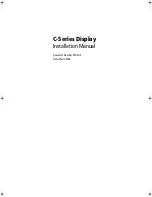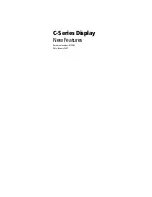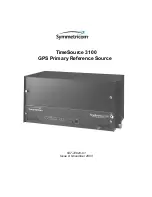
1. Description
The XCTouchNav is a modern device based on Android operating system with wired serial and wireless interfaces
as Bluetooth and WiFi to run applications such as XCSoar, LK8000 and more. It has a high-resolution sunlight
readable IPS type display that can perfectly be read at almost any viewing angle.
Optionally a FLARM or another source for NMEA (GPS) data can be connected to the XCTouchNav directly.
The application does not only reads data from loggers, it can also declare tasks there, settings can be changed e.g.
the baud rate of a FLARM or aircraft type and also the IGC log of the flight can then be read out.
By standard, the installed software is XCSoar that offers many features. Thanks to a growing library with lots of
glider polars, the software can be adapted to almost any glider. Since the XCSoar software source code is public
available on github, developers can clone the software and further develop their own features and ideas.
In connection with a variometer system, mostly the XCVario here is explained, e.g. true airspeed TAS can be
calculated with the outside temperature (OAT) and the precise altimeter without hysteresis together with the TE
vario signal allows final flight calculations with high reliability. An important feature is the wind calculation that
can already be provided by XCSoar together with a GPS source, circling wind or zigzag wind provided by
XCSoar is fairly good enough in flat land and furthermore improves the final flight precision.
It is very easy to operate XCSoar with the touchpanel, much more easy than a device with several rotary knobs at
any corner that do not operate intuitive and need study and practice. The device has an anti-glare and anti-
fingerprint surface already. Normally no extra protection is required.
The system which is manufactured in large numbers is not expensive, comes readily built up and tested (no self
craft set), is an excellent addon for any glider cockpit with already a FLARM device or a smart variometer
installed and keeps being extensible with a large number of wired and wireless interfaces.
Page 3




































